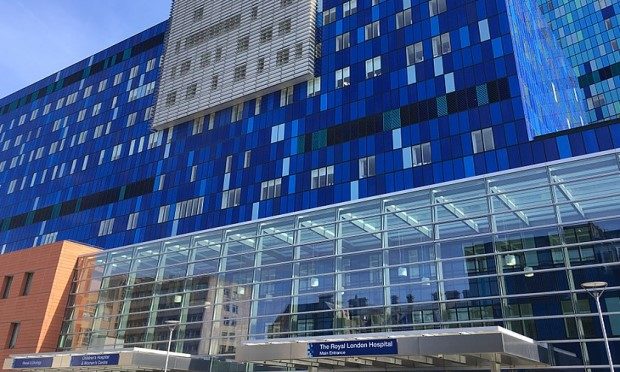Councillors assured critical bed capacity at Royal London Hospital will be sufficient

The chief executive of Barts Health NHS Trust last week assured councillors that the critical care bed capacity at the Royal London hospital will be sufficient as the second wave of the virus progresses.
Alwen Williams was giving committee members scrutinising health across north-east London an update on winter preparedness against the background of the past few months’ resurgence of the virus, revealing that a quarter of her Trust’s bed base was occupied by Covid patients.
The 14th and 15th floors of the Royal London are now established as a Covid intensive treatment unit, separate to critical care taking place in support of parallel elective treatments, with the hospital able to be stood up as a “supersurge” facility for the capital as a whole in the event that a peak of hospitalisations became significant.
Williams said: “We’re planning for the worst and hoping for the best that that won’t be needed. All the beds are there, the kit is there, so we have all the facilities there in place should they be required.
“At the moment we are able to balance our staff between the critical care pressures and keeping as much elective work going as we can, and so far we have managed to do that. The next few weeks will be critical in terms of the extent to which Covid demands continue, or level off and decline.
“The constraint is less about physical capacity and the beds, they are kitted out. Clearly the big decisions we have to take is where we redeploy staff, which is what we did in the first wave. The consequences were we had to take our elective work down, so theatre staff and others were redeployed to critical care.
“Effectively if we have to open many more critical care beds, that is when it wil start to impact on elective care, but I can assure you we will have enough beds for anybody who needs critical care with Covid in north-east London.”
Williams that added that the “significant pressures” continuing to be experienced in this part of the city were following a different pattern from the first wave of the virus, with hospitalisations in acute services increasing but at a “slow, steady” pace, with health workers closely monitoring Covid prevalence for people aged over 60.
The NHS is attempting to retain as much of its elective work as possible due to the curtailment of routine work in the early stages of the crisis and the resulting backlog of patients waiting for elective care, with stringent infection controls still in place and many outpatient services still being conducted virtually.
Over 65 patients have now been treated in the separate Covid intensive treatment unit on the Royal London’s 14th and 15th floors, with Williams trying to make sure that capacity is increased as and when it needs to be as numbers of beds in use increase since the unit was opened at the end of October.
Work is continuing on avoiding admissions as much as possible as the health system attempts to offer patients alternatives.
While the 14th and 15th floors will offer both sufficient capacity for the north-east of London and for “wider utilisation” across the capital if necessary, according to Williams, were demand to increase significantly staff would be redeployed from operating theatres and other parts of the hospital to ensure that beds brought online can be staffed, which would have a corresponding impact on elective work.
Williams added: “We won’t be able to do everything. At the moment there are extra critical care beds in the Royal London, separate to those being used for complex surgery, non-C trauma and demands on critical care. But it will be very much case of where the demand goes in the coming weeks in this second wave.
“At some point clearly the numbers will start to stabilise and reduce, but we are not yet seeing that, so I can’t predict exactly what will happen. We are hopeful the lockdown will start to have an impact, but we’ll have to wait and see.”
The Hackney incidence rate for Covid cases per 100,000 people stood at 161 last week, a six per cent drop from the previous week. The R value remained unchanged between 1.0 and 1.2, meaning that on average every 10 people infected will infect between 10 and 12 others.
Hackney saw 30 cases in the 60-69 age group, a rise of 15 per cent on the previous week. There were four cases aged between 70 and 79, a drop of 43 per cent on the week before, and the rates in the 80-plus age bracket stayed unchanged, with six cases last week.
